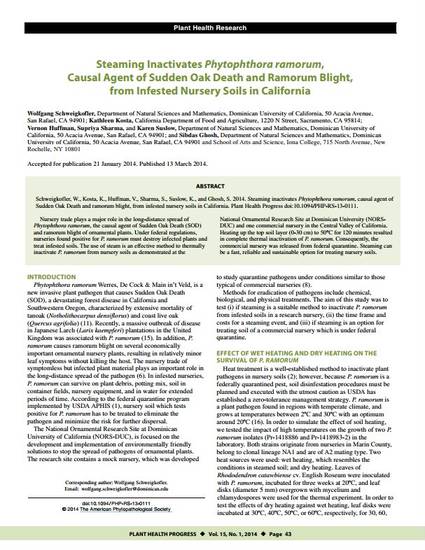
Nursery trade plays a major role in the long-distance spread of Phytophthora ramorum, the causal agent of Sudden Oak Death (SOD) and ramorum blight of ornamental plants. Under federal regulations, nurseries found positive for P. ramorum must destroy infected plants and treat infested soils. The use of steam is an effective method to thermally inactivate P. ramorum from nursery soils as demonstrated at the National Ornamental Research Site at Dominican University (NORS-DUC) and one commercial nursery in the Central Valley of California. Heating up the top soil layer (0-30 cm) to 50°C for 120 minutes resulted in complete thermal inactivation of P. ramorum. Consequently, the commercial nursery was released from federal quarantine. Steaming can be a fast, reliable and sustainable option for treating nursery soils.
Copyright © 2014 The American Phytopathological Society. All rights reserved.
Available at: http://works.bepress.com/wolfgang_schweigkofler/30/
